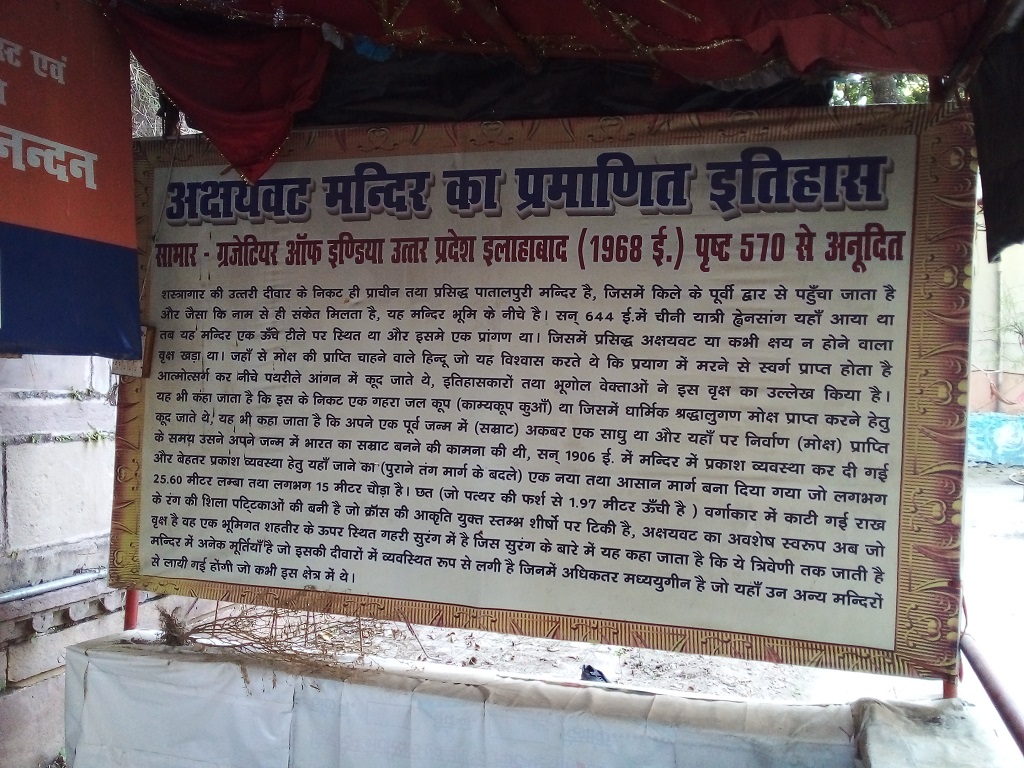Certified History of Akshayavat Temple
Courtesy – Gazetteer of India, Uttar Pradesh Allahabad (1968 AD) translated from page 570.
Near the northern wall of the armory is the ancient and famous Patalpuri temple, which is accessed from the eastern gate of the fort, and as the name suggests, this temple is underground. In 644 AD, the Chinese traveler Hiuen Tsang came here. Then this temple was situated on a high mound and it had a courtyard in which stood the famous Akshayavat or the tree that never decays. Historians and geographers have mentioned this tree from where the Hindus seeking salvation who believed that heaven is attained by dying in Prayag used to sacrifice themselves and jump down into the stony courtyard. It is also said that there is a deep water well (Kamyakoop Kuan) near it in which religious devotees used to jump to attain salvation. It is also said that in one of his previous birth (Emperor), Akbar was a hermit and here and at the time of attaining nirvana (salvation), he wished to become the emperor of India in his next birth. In 1906 AD the lighting system was installed in the temple for better lighting, and a new way to go here (instead of the old narrow path) an easy passage has been made which is about 25.60 meters long and about 15 meters wide. The roof (which is 1.97 meters high from the stone floor) is made of ash-coloured stone slabs cut into squares and rests on cross-shaped pillar capitals. The remains of Akshayavat, which is now a tree, on a subterranean beam is located in a deep tunnel, which is said to lead to Triveni. The temple has many sculptures arranged in its walls, mostly medieval, which must have been brought here from other temples that once existed in the area.
